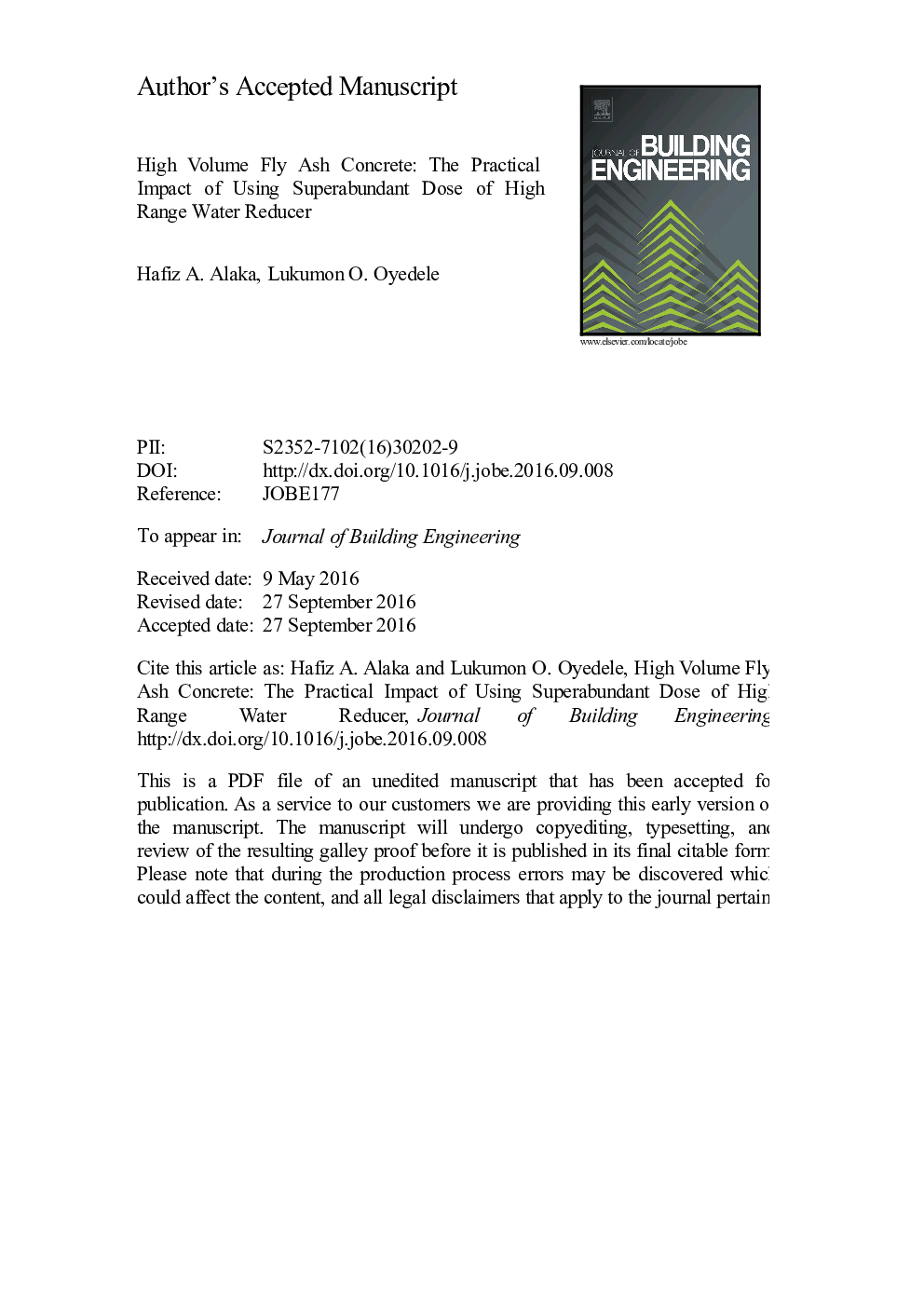| کد مقاله | کد نشریه | سال انتشار | مقاله انگلیسی | نسخه تمام متن |
|---|---|---|---|---|
| 4923209 | 1430640 | 2016 | 30 صفحه PDF | دانلود رایگان |
عنوان انگلیسی مقاله ISI
High volume fly ash concrete: The practical impact of using superabundant dose of high range water reducer
ترجمه فارسی عنوان
بتن خاکستر مقاوم در برابر حجم بالا: اثر عملی استفاده از دوز فوق العاده ای از کاهش دهنده آب بالا
دانلود مقاله + سفارش ترجمه
دانلود مقاله ISI انگلیسی
رایگان برای ایرانیان
کلمات کلیدی
موضوعات مرتبط
مهندسی و علوم پایه
سایر رشته های مهندسی
مهندسی عمران و سازه
چکیده انگلیسی
The practice of using extraordinarily low water/binder ratio for high volume fly ash (HVFA) concrete mixes in order to realize adequate early strength is prevalent. Generally, superabundant dose of high range water reducer (i.e. superplasticizer) is required to make such mixes workable. The relationship between superabundant superplasticizer dose and various HVFA concrete properties is thus examined in this research work. Three groups of HVFA concrete mixes were designed for this purpose. Each group consisted of 3 mixes. Except for superplasticizer dose, the proportion of materials in the three group 1 mixes were the same, each mix containing 50% fly ash as replacement for cement. Of the three mixes, one contained maximum superplasticizer dose at 2% of binder by mass, the second contained superabundant dose at 3% while the third contained 4% dose. Group 2 and 3 mixes were similar to those of group 1 except that they contained 60% and 65% fly ash content respectively. Fresh concrete tests performed on the mixes included flow table and slump tests. Mechanical tests included compressive strength, splitting tensile strength, flexural strength and wear resistance tests. The outcome of the tests revealed that superabundant superplasticizer doses helped to obtain relatively lower water/binder ratios with good workability; led to reduction in wear/abrasion resistance; and had no observable relationship, beneficial or adverse, with the compressive, splitting tensile and flexural strengths of the HVFA concrete mixes. Increase in fly ash content was also noted to beget reduction in wear/abrasion resistance. In addition, the outcome indicated that increase in compressive strength does not necessarily translate to improved abrasion or wear resistance.
ناشر
Database: Elsevier - ScienceDirect (ساینس دایرکت)
Journal: Journal of Building Engineering - Volume 8, December 2016, Pages 81-90
Journal: Journal of Building Engineering - Volume 8, December 2016, Pages 81-90
نویسندگان
Hafiz A. Alaka, Lukumon O. Oyedele,
